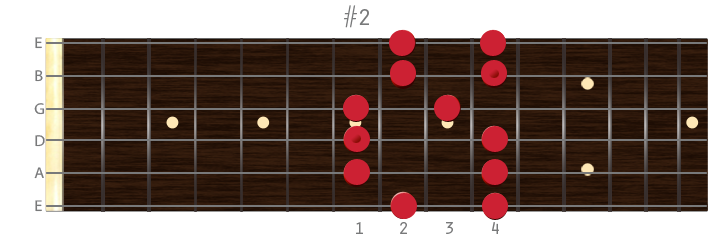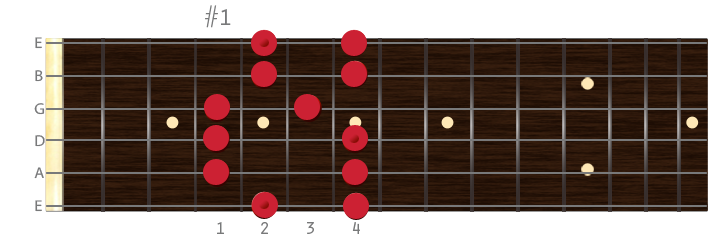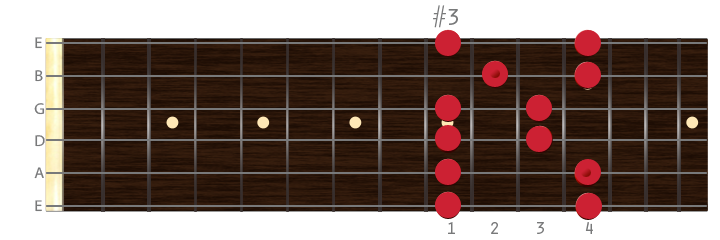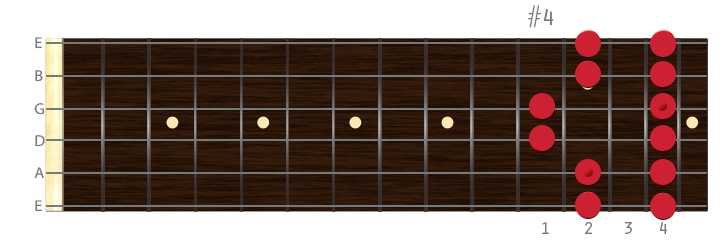Minor Pentatonic Scale.
A MINOR





Minor Pentatonic Scale
The minor pentatonic uses scale tones 1, 3, 4, 5, and 7 of the natural minor scale. It may also be considered a gapped blues scale. The 5 scale boxes are the same for major and minor but they are played at different positions on the neck.
Major Pentatonic Scale.
A MAJOR





Major Pentatonic Scale
The major scale starts one box back in comparison to the minor. Position #1 (5th fret) in the A minor is moved back to start at the 2nd fret in A Major. All pentatonic box positions will move back one box respectively.
Box positions
‘Box position’, refers to the position on the neck, which in these diagrams is denoted by #1, #2, #3, #4, #5. Playing the scale low to high and back again completes the sequence of a particular scales box.
Neck runs
By moving from one box to another using finger slides, hammer ons’ and pull offs’ can generate great musical phrases or lead lines.
Trading off
‘Trading off’, is a term that can be used to describe playing notes out of both scales in the same phrase, this has been widely used.
Five Notes
Pentatonic means ‘five notes’ and that’s part of the reason these scales are a great place to start. Many other scales use seven notes, so you have fewer notes to keep track of with pentatonics. But the main reason people use pentatonic scales is to create dynamic solos simply and easily by employing the magic of the minor-pentatonic scale and its close relative, the major-pentatonic scale.
The Right Five
Artists like Jimi Hendrix, Jimmy Page, and Duane Allman often used only five notes to create some of the greatest solos of all time…
The next step could be to combine this with the diatonic arpeggio pattern & target notes…
